Hey there, future FPV pilot! Ready to dive into the exhilarating world of FPV drones? Get ready to strap on those goggles and experience the thrill of first-person view flying like you've never imagined!
Picture this: You're at the controls of a high-performance drone, soaring through the skies with the wind rushing past your face. But here's the game-changer – you're not just watching it from the ground like a spectator. No, my friend, you're right there in the cockpit, seeing everything through the eyes of your drone.
Welcome to the captivating world of FPV drones, where you get to live out your Top Gun dreams and defy gravity without ever leaving the ground. But hold on, what exactly is an FPV drone, and how does it all work? Fear not, because in this beginner's guide, we'll walk you through the basics, unravel the jargon, and equip you with the knowledge you need to get started.
So, let's buckle up, put on those goggles, and embark on an incredible journey into the realm of FPV drones. Get ready for an adrenaline-fueled adventure that will make your heart race and your spirits soar. Are you excited? We sure are! Let's take flight and discover the magic of FPV drones together!

What is an FPV Drone?
Alright, let's break it down. FPV stands for First-Person View, and when we talk about FPV drones, we're talking about a whole new level of drone piloting. It's not just about sending a drone up into the sky and watching it from the ground like a spectator. With FPV drones, you become the pilot, experiencing the thrill of flight from a whole new perspective.
Imagine strapping on a pair of sleek goggles or peering into a monitor, and suddenly, you're transported to the cockpit of your drone. It's as if you've miniaturized yourself and hopped on board, ready to take off on incredible aerial adventures.
But how does it work? Well, it's all about the magic of technology. An FPV drone is equipped with a small camera mounted on the front, capturing live video footage as it soars through the air. This live video feed is transmitted wirelessly to your goggles or monitor in real-time, giving you a breathtaking first-person view of everything your drone sees.
Think of it as your eyes in the sky, allowing you to explore the world from an entirely different vantage point. You can zip through trees, perform jaw-dropping acrobatic maneuvers, and even race with other FPV pilots, all while experiencing the rush of flight as if you were right there in the cockpit.
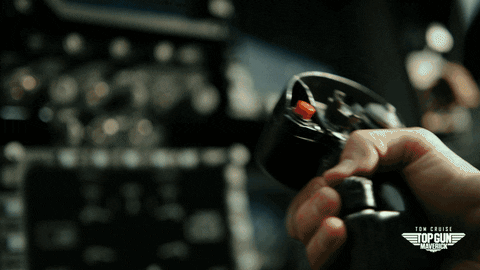
Now, you might be wondering why FPV flying has become such a sensation among drone enthusiasts. Well, my friend, it's the ultimate combination of thrill, immersion, and skill. FPV drones offer an unparalleled sense of speed and agility, pushing the boundaries of what's possible in the world of drone piloting.
So, if you're ready to take your drone experience to new heights (literally!), it's time to dive into the world of FPV drones. Strap on those goggles, get your hands on a controller and get ready to be amazed. The sky's the limit, and with FPV drones, you're about to discover a whole new dimension of adventure.
Key Components of an FPV Drone

Alright, fellow FPV enthusiasts, get ready to embark on an exciting journey through the inner workings of FPV drones. In this guide, we'll unravel the mysteries and reveal the secrets behind building your very own high-flying machine. To help you grasp the process, we'll even draw parallels to the world of custom computer builds – because let's face it, building an FPV drone is like assembling a powerful computer, but one that defies gravity.
Just like a custom computer build, an FPV drone is composed of carefully selected components, each serving a specific purpose. From the robust frame that forms its sturdy backbone to the advanced cameras, video transmitters, and receivers that bring the world to your eyes, we'll explore it all.
Now, imagine yourself with a toolkit in one hand and a blueprint in the other, ready to dive into a world where innovation and adventure collide. With the right components and a touch of DIY magic, you'll be able to assemble a personalized FPV drone that suits your style and flying preferences.
So, whether you're a seasoned computer builder or completely new to the DIY scene, fear not! We'll guide you through the process step by step, drawing on the similarities to custom computer builds to help you make sense of it all.
So, grab your soldering iron, put on your favorite tunes, and get ready to geek out with us as we explore the fascinating world of FPV drone components. By the time we're done, you'll be well on your way to piloting your own high-performance flying machine, custom-built to soar through the skies with finesse.
Frame: The Sturdy Foundation of Your FPV Drone

When it comes to FPV drones, the frame serves as the backbone, much like the computer tower or case that houses all the electronic components of a custom-built PC. It's not just a mere structure; it's a vital component that provides support, protection and a platform to bring everything together.
Purpose and Construction
Just like a computer tower, the majority of FPV drone frames are constructed from carbon fiber, which has become the standard material due to its lightweight and durable properties. However, frames can also be made from other materials, such as aluminum, for specific use cases and preferences.
Materials and Durability
FPV drone frames are typically constructed from lightweight and sturdy materials like carbon fiber. These materials strike a balance between strength, weight, and durability, ensuring that your drone can withstand the rigors of high-speed maneuvers and occasional crashes.
Frame Types and Designs
Similar to computer towers that come in various sizes and designs, FPV drone frames also come in different configurations. You'll find frames categorized into various types, such as H-frames, X-frames, or even hybrid designs, each with its unique characteristics and flight characteristics.
Customization, Size, and Propeller Considerations
Just like computer builders have the flexibility to choose the size and form factor of their computer tower, FPV pilots can select drone frames of different sizes to suit their specific needs. The size of FPV drone frames is often related to the propeller size they can accommodate. They can range from very small frames used for "tiny whoop" indoor flying to larger frames capable of carrying 11 or 12-inch propellers, which are suitable for cinematic aerial shots with cameras and gimbals.
Additional Features and Integration
Advanced FPV drone frames may include additional features such as vibration dampening systems or mounting options for specific components. These features enhance the overall functionality and ease of integration, much like specialized features in computer cases.
By carefully selecting the right frame for your FPV drone, typically made of carbon fiber but with options for other materials, you'll not only ensure the structural integrity but also have the freedom to build a customized flying machine that meets your requirements, size preferences, and propeller compatibility.
Flight Controller: The Brain of Your FPV Drone-
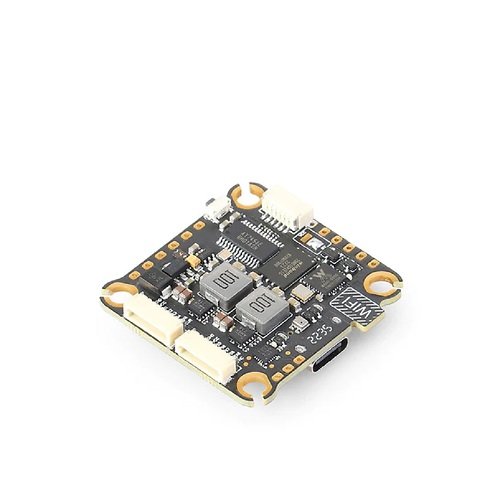
When it comes to FPV drones, the flight controller plays a crucial role, serving as the brain that controls and coordinates all the drone's functions. In this section, we'll draw parallels to the motherboard and processor in a computer to help you understand the importance of the flight controller in your FPV setup.
Flight Controller Basics
The flight controller acts as the central hub, connecting and controlling various components of your drone, just like a motherboard in a computer. It gathers sensor data, interprets your control inputs, and sends signals to the motors and other components to maintain stability and maneuverability during flight.
Main Components
The flight controller typically consists of three main components: the microcontroller unit (MCU), gyroscopes, and accelerometers. The MCU, often referred to as the processor of the flight controller, handles the computational tasks and executes flight control algorithms, much like a processor in a computer.
Sensor Integration
Just like a motherboard integrates various components and ports, the flight controller integrates sensors such as gyroscopes and accelerometers. These sensors provide vital information about the drone's orientation, movement, and acceleration, enabling the flight controller to make real-time adjustments and stabilize the aircraft during flight.
Firmware and Configuration
Similar to how a computer's motherboard requires firmware and configuration, the flight controller operates on firmware specifically designed for drone flight control. Additionally, you can customize and fine-tune the flight controller's settings through software interfaces, allowing you to optimize the performance and behavior of your FPV drone.
Additional Features and Expansion
Advanced flight controllers may offer additional features such as built-in power distribution, voltage regulators, and support for external modules like GPS or telemetry. This expansion capability allows you to enhance the functionality of your drone and add advanced features, similar to how expansion slots on a motherboard allow for additional peripherals in a computer.
By selecting a reliable and feature-rich flight controller, you're essentially equipping your FPV drone with a powerful brain that ensures stability, responsiveness, and precise control. Just as the motherboard and processor are critical components in a computer, the flight controller is an essential component that determines the performance and capabilities of your FPV drone.
Electronic Speed Controller (ESC): Power Regulation and Motor Control
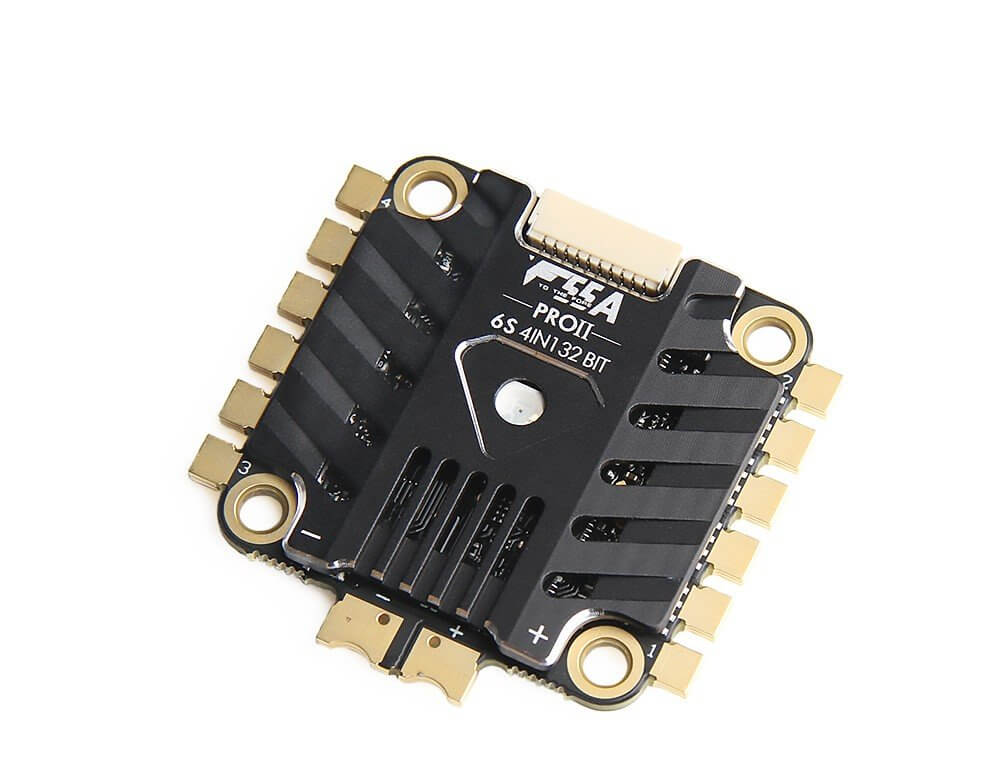
The Electronic Speed Controller (ESC) is a critical component that regulates power distribution and controls the speed of the motors in your FPV drone. In this section, we'll explore the role of the ESC and its importance in ensuring smooth and responsive flight performance.
ESC Basics
The ESC acts as the intermediary between the flight controller and the motors, converting signals from the flight controller into the appropriate electrical current to control motor speed. It plays a vital role in maintaining stability, responsiveness, and precise control during flight.
Power Regulation
The ESC regulates the power distribution from the battery to the motors, ensuring a consistent and reliable power supply. It converts the direct current (DC) from the battery into a variable-frequency alternating current (AC) that drives the motors, enabling precise control over motor speed and thrust.
Motor Control and Communication
The ESC receives signals from the flight controller, commanding it to adjust the motor speed. It translates these signals into electrical pulses that determine the motor's rotation speed. The ESC's ability to interpret these signals accurately and respond quickly is crucial for maintaining stability and maneuverability during flight.
ESC Types and Specifications
ESCs come in various types and specifications, including their amperage rating, number of motor outputs, and firmware compatibility. These specifications determine the ESC's compatibility with different motor and propeller configurations, as well as its ability to handle the power demands of your FPV drone.
ESC Calibration and Configuration
Proper calibration and configuration of the ESC are essential for optimal performance. This involves setting up the throttle range, ensuring synchronization between the ESCs, and configuring other parameters such as motor direction and braking. Accurate calibration and configuration contribute to smooth and efficient motor operation.
By selecting a reliable and appropriately rated ESC, and ensuring proper calibration and configuration, you can achieve precise motor control, responsiveness, and overall flight performance in your FPV drone. The ESC plays a crucial role in maintaining stability, power efficiency, and maneuverability, making it an integral part of the FPV system.
Motors and Propellers: Powering Your FPV Drone's Flight
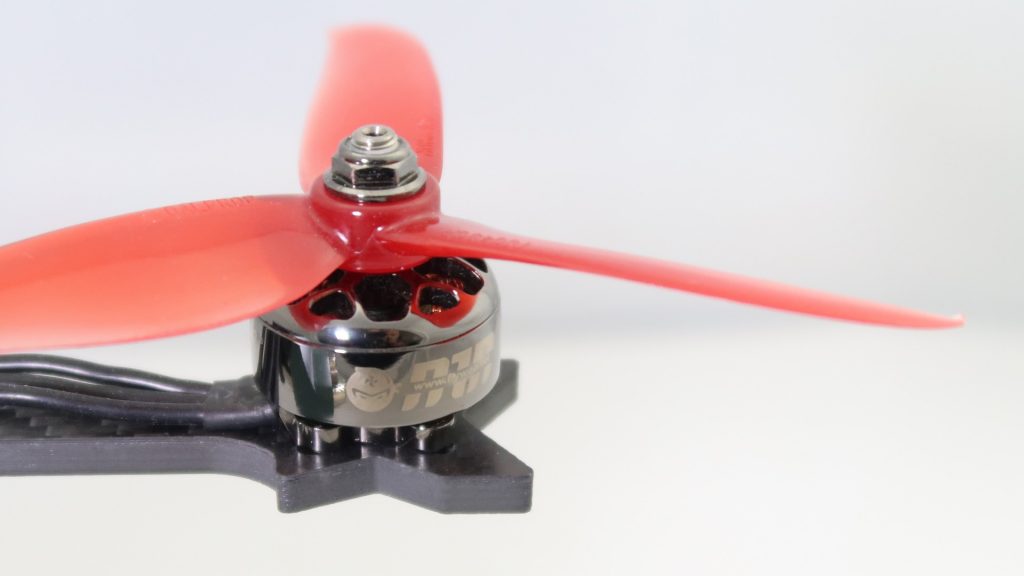
When it comes to FPV drones, motors and propellers are the dynamic duo that provide the necessary thrust and maneuverability to navigate the skies. In this section, we'll explore the role of motors and propellers and how they work together to elevate your FPV drone to new heights.
Motor Basics
Motors are the workhorses of your FPV drone, much like the engine of a vehicle. They convert electrical energy from the battery into mechanical power, generating thrust to lift the drone off the ground. Brushless motors are the most common type used in FPV drones due to their efficiency, durability, and precise control.
Propellers: Wings in Motion
Propellers, also known as "props," are the spinning blades that create airflow and exert a force to propel the drone forward. They are the wings in motion, providing lift and generating the thrust necessary for flight. Propellers come in different sizes and pitch angles, each impacting the drone's performance and flight characteristics.
Motor-Propeller Combinations
The pairing of motors and propellers is crucial for optimizing performance and achieving the desired flight characteristics. The combination determines factors such as thrust, efficiency, speed, and maneuverability. Selecting the appropriate motor-propeller combination depends on factors like the drone's weight, desired speed, and intended use.
Motor Control and ESCs
To regulate the speed and rotation of the motors, electronic speed controllers (ESCs) are used. ESCs act as the intermediary between the flight controller and the motors, converting signals into the appropriate electrical current to control motor speed. This control allows for precise maneuvering and stability during flight.
Propeller Safety and Maintenance
Safety is paramount when it comes to propellers. It's crucial to ensure that propellers are securely fastened and balanced to avoid vibrations and potential damage. Regular inspection, maintenance, and replacement of damaged or worn-out propellers are essential to ensure optimal performance and safe flying.
By understanding the role of motors and propellers in your FPV drone, you can make informed choices when selecting the appropriate combination for your desired flight characteristics. The proper pairing and maintenance of these components are essential for a smooth and exhilarating flying experience.
Camera and Video Transmitter (VTX): Capturing the FPV Experience

The camera and Video Transmitter (VTX) are crucial components that enable FPV pilots to experience the thrill of flight in real-time. In this section, we'll explore the role of the camera and VTX in capturing and transmitting the FPV video feed.
FPV Camera Basics
The FPV camera is specifically designed to provide a live video feed from the drone's perspective, allowing pilots to fly as if they were inside the cockpit. It captures high-quality video with low latency, ensuring a seamless and immersive FPV experience.
Camera Specifications and Features
FPV cameras come in various specifications and features, including resolution, field of view (FOV), dynamic range, and light sensitivity. These specifications determine the quality of the FPV feed and the camera's ability to handle different lighting conditions, providing a clear and detailed view during flight.
Video Transmitter (VTX)
The Video Transmitter (VTX) works in conjunction with the camera to transmit the FPV video feed wirelessly to the pilot's goggles or ground station. It converts the video signal from the camera into radio waves and broadcasts it on a specific frequency, allowing the pilot to view the real-time video feed.
VTX Power and Channels
VTXs come in different power outputs and support multiple frequency channels. The power output affects the transmission range and signal strength, while the channel selection ensures compatibility with other FPV equipment and minimizes interference with other pilots in the area.
Antennas and Signal Quality
Antennas play a crucial role in ensuring optimal signal quality and range for the FPV video transmission. Choosing the right antenna type and positioning can significantly improve signal strength, minimize signal loss, and reduce video breakup or static interference during flight.
Regulatory Considerations
It's important to adhere to local regulations and guidelines regarding VTX power output and frequency usage. Familiarize yourself with the specific rules in your region to ensure compliance and minimize the risk of interfering with other wireless systems.
By selecting a high-quality FPV camera and Video Transmitter (VTX) and ensuring proper antenna selection and setup, you can capture and transmit a clear and immersive video feed, providing an exhilarating FPV experience.
FPV Goggles and Video Receiver (VRX): Immersive Viewing Experience
FPV Goggles and Video Receiver (VRX) are essential components on the pilot's side of the FPV system, providing an immersive and real-time viewing experience. In this section, we'll explore the role of FPV Goggles and VRX in receiving and displaying the FPV video feed.
FPV Goggles Basics
FPV Goggles are specialized headsets that pilots wear to view the live video feed transmitted from the drone. They feature high-resolution displays, low latency, and often include features such as head tracking and DVR (Digital Video Recording) capabilities.
Display Technology
FPV Goggles utilize various display technologies, including LCD (Liquid Crystal Display), OLED (Organic Light-Emitting Diode), or a combination of both. Each technology has its advantages in terms of image quality, contrast ratio, color reproduction, and field of view (FOV).
Receiver Module (VRX)
The Video Receiver (VRX) module is a separate component that connects to the FPV Goggles. It receives the video signal wirelessly from the drone's VTX and demodulates it for display on the goggles. The VRX allows for compatibility with different frequencies and ensures a reliable and clear video reception.
Channel Selection and Diversity
VRX modules often support multiple frequency channels and employ diversity technology to enhance video reception. Diversity systems use multiple antennas to receive the video signal, automatically selecting the antenna with the strongest signal to minimize video breakup or signal loss.
Ergonomics and Comfort
FPV Goggles come in various designs and shapes to provide comfort and minimize fatigue during extended flying sessions. Factors such as weight distribution, adjustable head straps, and foam padding contribute to a comfortable and secure fit.
Additional Features
Advanced FPV Goggles may offer additional features such as built-in DVRs for recording flights, HDMI input for external video sources, and support for head tracking systems that allow the pilot to control the camera movement by moving their head.
By selecting suitable FPV Goggles and Video Receiver (VRX) that align with your preferences and requirements, you can enjoy an immersive and captivating FPV experience, as if you were in the cockpit of your drone.
Receiver and Transmitter (Radio Controller): Commanding Your FPV Drone

The Receiver and Transmitter, also known as the Radio Controller, are the essential tools that allow pilots to command their FPV drones with precision and control. In this section, we'll explore the role of the Receiver and Transmitter and their importance in controlling the drone's flight.
Radio Controller Basics
The Radio Controller is the handheld device used by the pilot to send control signals to the drone. It consists of a Transmitter held by the pilot and a Receiver installed on the drone, creating a wireless communication link between them.
Transmitter Features and Controls
The Transmitter incorporates various features and controls, including sticks (throttle, pitch, roll, and yaw), switches, dials, and buttons. These controls allow pilots to maneuver the drone, change flight modes, activate features, and control auxiliary functions.
Receiver Installation and Binding
The Receiver is installed on the drone and connected to the flight controller. It receives the signals from the Transmitter and relays them to the flight controller, enabling the drone to respond to the pilot's commands. Binding is the process of establishing a secure connection between the Transmitter and Receiver before flight.
Radio Frequencies and Channels
Radio Controllers operate on specific radio frequencies and utilize multiple channels to avoid interference between different pilots. Understanding the frequency regulations in your region and selecting an appropriate channel ensures smooth and reliable communication between the Transmitter and Receiver.
Range and Signal Quality
The range of the Radio Controller refers to the maximum distance at which the pilot can reliably control the drone. Factors such as antenna type, power output, and environmental conditions can affect the range. Maintaining a strong and stable signal is crucial for precise control and safe flight.
Modes and Flight Profiles
Radio Controllers often offer different flight modes and profiles, allowing pilots to switch between various control settings and flight characteristics. These modes can include beginner-friendly modes, acro mode for advanced maneuvers, and customizable profiles to suit individual preferences.
By selecting a reliable and feature-rich Receiver and Transmitter system and familiarizing yourself with its controls and functions, you can confidently take command of your FPV drone and enjoy precise control and maneuverability.
Batteries: Powering Your FPV Drone
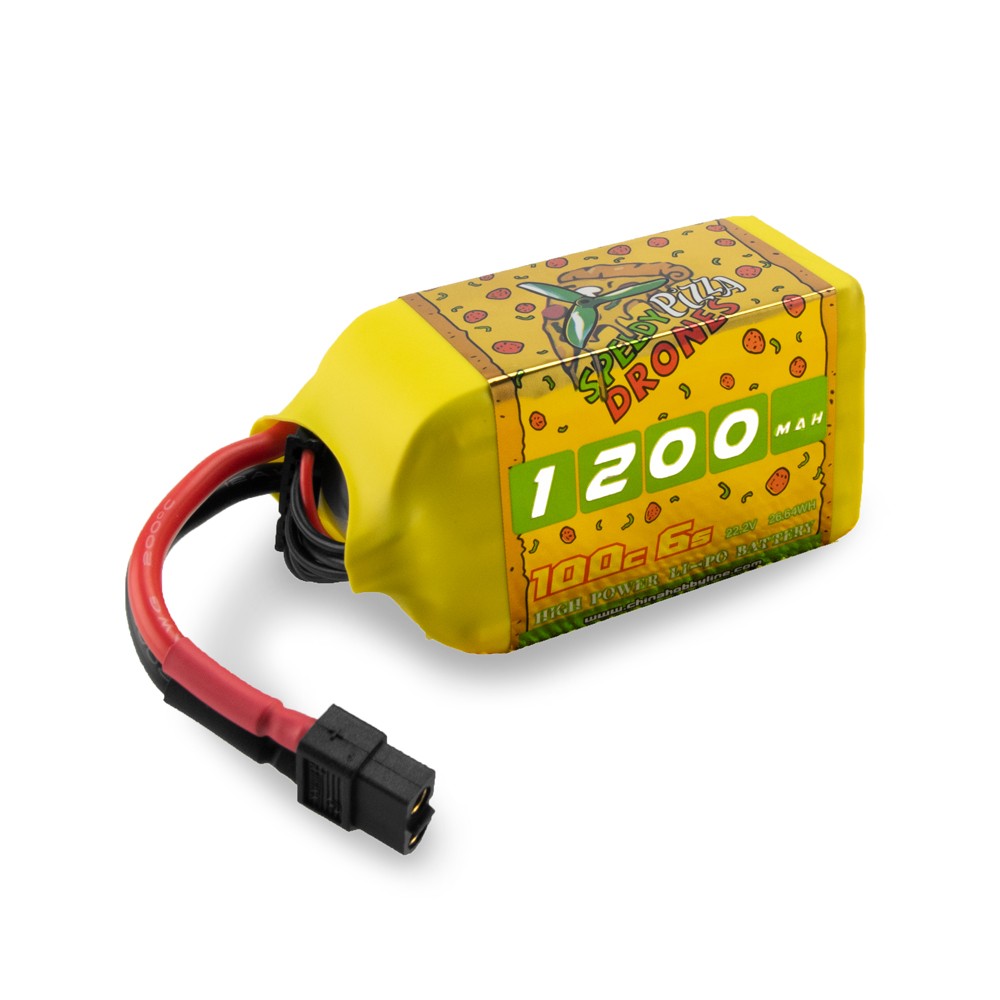
Batteries are the lifeblood of your FPV drone, providing the necessary power to keep it airborne. In this section, we'll explore the role of batteries and their importance in powering your FPV drone.
Battery Basics
FPV drones typically use lithium polymer (LiPo) batteries due to their high energy density, lightweight nature, and ability to deliver the required current for flight. Understanding battery basics such as voltage, capacity, and discharge rate is crucial for optimal performance and flight times.
Battery Voltage and Cell Count
The voltage of a LiPo battery is determined by the number of cells it contains. Common configurations include 3S (3 cells), 4S (4 cells), and higher. Selecting the appropriate voltage and cell count is essential to match the power requirements of your drone's components.
Battery Capacity and Flight Time
Battery capacity is measured in milliampere-hours (mAh) and determines how much energy the battery can store. Higher capacity batteries generally offer longer flight times, but they may also be heavier. Balancing capacity with weight and flight duration requirements is crucial.
Battery Discharge Rate
The battery's discharge rate, expressed in "C" (Coulombs), indicates how quickly it can deliver power. Higher discharge rates are necessary for more demanding setups and aggressive flight styles. It's important to choose batteries with an adequate discharge rate to prevent voltage sag and maintain stable performance.
Battery Care and Safety
Proper care and handling of LiPo batteries are crucial to ensure longevity and safety. This includes storing and charging batteries in fireproof bags, avoiding over-discharging, balancing cell voltages, and following manufacturer's guidelines for safe usage and disposal.
Battery Charging and Management
Charging LiPo batteries requires a dedicated LiPo charger capable of balancing cell voltages and monitoring the charging process. It's important to use the correct charging settings, balance charge when necessary, and avoid leaving batteries unattended during charging.
Storage Voltage and Full Voltage
LiPo batteries have specific voltage recommendations for storage and full charge. For long-term storage, it is recommended to store LiPo batteries at around 3.8V per cell, as this helps prolong their lifespan. When preparing for flight, charging the batteries to their full voltage of approximately 4.2V per cell ensures maximum power output during the flight.
By selecting high-quality batteries, understanding their specifications, and adopting proper battery care practices, you can ensure reliable power supply and maximize your FPV flight experience.
Embark on Your FPV Drone Building Journey
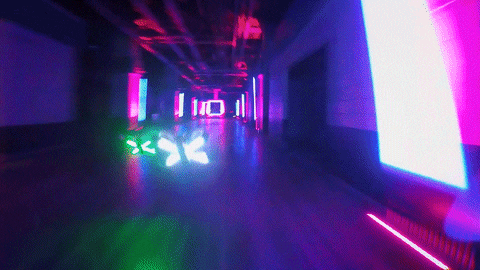
Building your own FPV drone can be a daunting task at first, but the rewards are truly worth the effort. The feeling of freely soaring through the skies and experiencing the world from a pilot's perspective is an exhilarating experience like no other.
Throughout this article, we've explored the key components that make up an FPV drone, drawing analogies to familiar computer parts to help you understand their roles. From the frame to the batteries, each component plays a vital role in creating a custom drone that suits your flying style.
By taking on the challenge of building your drone, you gain a deeper understanding of the technology and unleash your creativity. It's a journey that allows you to tailor your drone to your exact specifications, resulting in a flying machine that is truly your own.
While there may be challenges along the way, the reward of piloting a drone that you built with your own hands is unparalleled. The feeling of freedom and control as you navigate through the air is an experience that will keep you coming back for more.
So, don't be afraid to dive into the world of FPV drone building. Embrace the challenges, expand your knowledge, and enjoy the incredible journey that awaits you. The sky is your playground, and with your custom-built drone, you have the power to explore it like never before.
Are you ready to take the leap and experience the thrill of piloting your very own FPV drone? Let the adventure begin!


1 comment
I read the whole article the article is so interesting and really helpful for people who want to buy or already use fpv drones
IZI holding a drone monopoly in india delivering one of the best fpv drone
Check it out : https://shorturl.at/gvES7